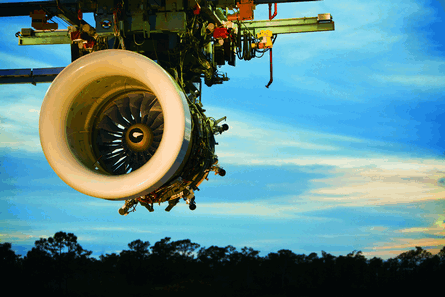CFM International once played the underdog that toppled Pratt & Whitney's lock on the narrowbody sector by applying a new technology called the turbofan.
Twenty-five years later, the roles could now be reversed. P&W's new engine type - the geared turbofan (GTF) - is set to challenge CFM's potentially conventional replacement for the CFM56 during the next decade.
 |
|---|
© Pratt & Whitney |
With both companies vying to develop the engine technology that will dominate the single-aisle segment for the next 30 years, they are effectively setting out rival business plans based on opposing engineering approaches to the same problem. It's far from clear today which approach will turn out to be the right one.
Even as P&W has launched GTF, the General Electric/Snecma joint venture CFM remains in the technology development phase for LEAP56, an advanced but conventional turbofan.
With the first new engine type introduced in the narrowbody market since the CFM56, P&W's move clarifies a clear technology split with its main rival.
Interestingly, both companies roughly agree on the performance requirements for a next-generation engine, with a 15% reduction in specific fuel consumption - as measured on a laboratory test-bed - as the baseline goal.
Lighter Materials
The disagreement turns on how each engine maker compensates for the extra weight and power requirements needed to drive a larger and heavier fan. P&W's solution is to connect the low-pressure turbine to the engine fan through a gear. CFM's LEAP56 approach is to use lighter materials and to optimise the aerodynamic performance of the compressor and turbine stages.
Each solution carries its own inherent trade-offs and risks, however each engine maker says its own approach is not only superior, but offers the only practical solution to the problem of compensating for the larger fan.
"The 10-12% fuel burn improvement and quieter fan [for the GTF, as claimed by P&W] have nothing to do with the gear," says Ron Klapproth, LEAP56 programme manager.
On the other hand, Alan Epstein, P&W's vice-president of advanced technology and the environment, believes the LEAP56 design is inherently compromised by weight, which will limit the on-the-wing fuel burn improvement. "You may be able to do something with [specific] fuel consumption, but not with fuel burn," Epstein says.
A 15% improvement in fuel savings requires any next-generation engine to achieve an ultra-high ratio of air bypassing the engine core, or an ultra-high bypass ratio of at least 12:1 compared with 6:1 with today's engines. Further, both CFM and P&W agree that the key ingredient to achieve this ratio is a wider fan diameter, which forces more air into and around the engine core. CFM's LEAP56 concept, for instance, is proposing to widen the fan from 1.52m to up to 1.78m (60in to up to 70in).
The larger fan can dramatically increase the overall weight of the engine. In a conventional architecture, it also means the low-pressure turbine (LPT) has to work harder to drive the fan and the high-pressure turbine (HPT) has to drive a heavier load of air flowing into the compressor.
CFM is choosing to deal with this extra load by using lighter materials and optimising turbine performance. Klapproth says a new, highly loaded compressor and turbine also is improved by CFM's use of more advanced bladed disks, or "blisks".
But CFM's approach faces trade-offs in terms of added complexity in blade design and a potentially narrow margin for performance growth.
P&W's GTF solution represents a fundamental departure from CFM's philosophy. Rather than optimise conventional engine architecture, P&W wants to solve the weight and power problem by gearing the LPT to increase its speed and power, avoiding the need to add extra stages to the turbine and saving a net 182kg and 1,500 airfoils, Epstein says.
Maintenance is another area of dispute. CFM's Klapproth claims the GTF will be disadvantaged because the gear introduces another sophisticated part. But P&W's Epstein sees the LEAP56 concept as inherently more risky as a maintenance issue because it stretches turbine materials and aerodynamics to their limit.
Source: FlightGlobal.com
















